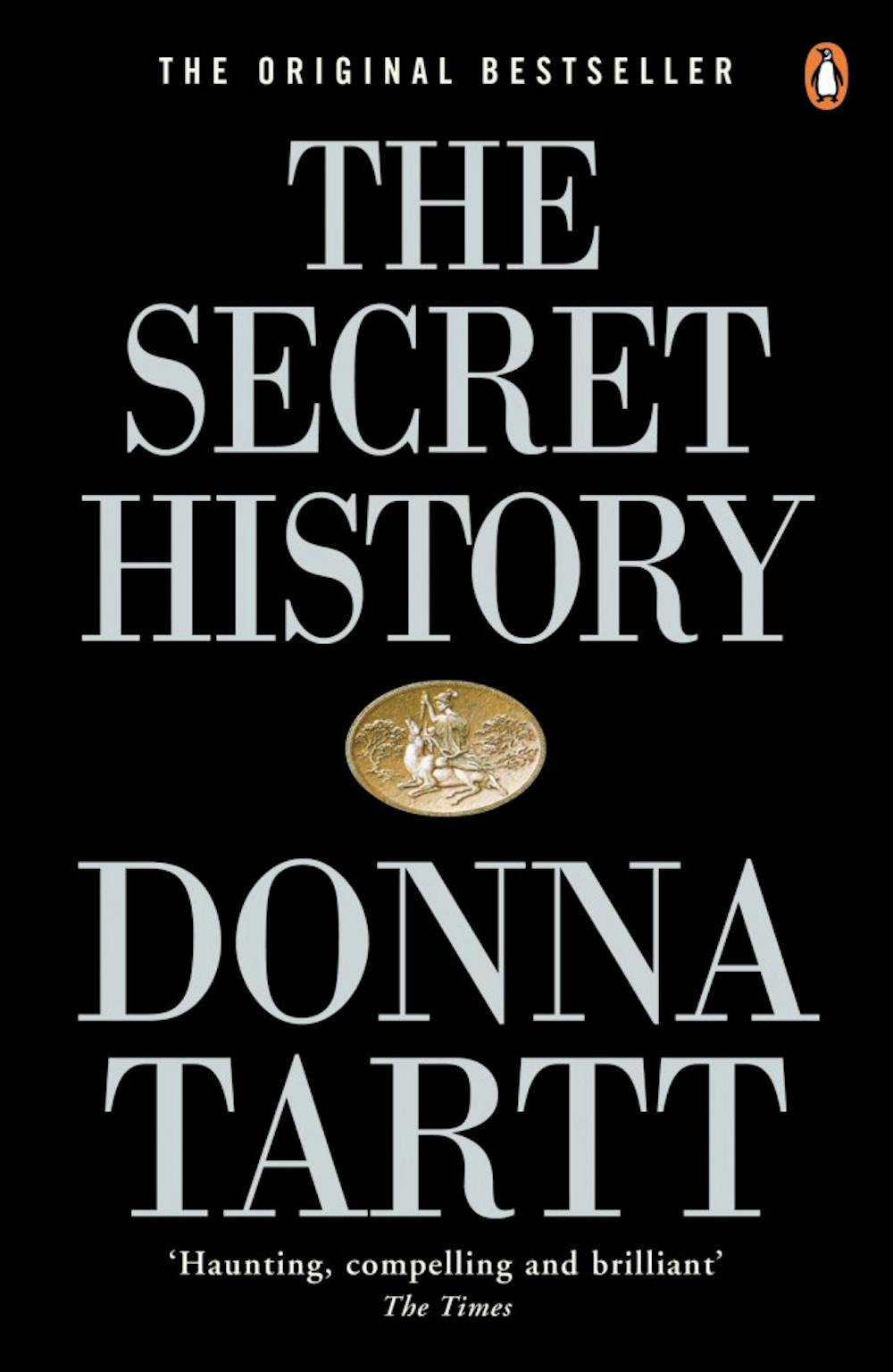“The snow in the mountains was melting and Bunny had been dead for several weeks before we came to understand the gravity of our situation,” Donna Tartt writes in the opening sentence of “The Secret History.” Within this first line, the victim and the crime are already established. But what is the motive?
“The Secret History” is an inverted detective story centered around a group of eccentric Classics students set in the 1980s at the fictional Hampden College, a small, elite liberal arts school in rural Vermont (not dissimilar to Middlebury).
Our guide through the dizzying academic and social scene is the mellow and mysterious Richard Papen, a Californian transferring to Hampden on a scholarship. He’s not a rich, connected New Englander, and he watches with curiosity as his peers indulge in lavish meals and flock to country homes. Richard wants to continue his study of ancient Greek and joins an exclusive circle of Classics students led by a charismatic professor. Richard’s classmates include the quiet but intelligent Henry, wealthy and quick-witted Francis, beautiful but secretive twins Charles and Camilla, and oddball, brash Bunny. It’s at once mystery, a psychological thriller and an ode to the beauty of Classics and literature.
“The Secret History” chronicles a descent into mania, exploring both guilt and justice and how they complicate friendships. The characters are richly nuanced; they perform evil acts, yet I still found myself strangely sympathizing with them at times. Their lives are messy, plagued with alcohol and drug problems, mental health issues and unrequited love. Coming-of-age is typically associated with high school, and it is refreshing to read about college students struggling to figure out what they want to achieve in school and beyond.
Released in 1992, this novel was Tartt’s literary debut, published when she was only 29. The result is impressive: Tartt spins strange events into a plausible story. Her writing is sharp and crisp, and it is easy to mentally picture each scene, whether it be a seedy bar, a dusty classroom or a sleepless night in a stuffy dorm room.
Although Hampden is based on Bennington College, two hours south of us in Vermont and Tartt’s alma mater, it takes little imagination to envision the story taking place in Middlebury, as it even touches on the difficult and tense relationship between local Vermonters and privileged college students. Tartt approaches college from the perspective of an outsider who feels insecure; Richard even goes as far as to fabricate stories of an idealized childhood filled with swimming pools and orange groves to try to fit in with his peers. Richard’s physical appearance is never openly described, making him the everyday man. But when you see the story and its horrific events only through his eyes, it is easy to wonder how reliable a narrator Richard really is, which adds another layer of complexity to the novel.
With the multiple references to Greek, philosophy, and literature, “The Secret History” can feel occasionally pretentious, although I think Tartt means it more as a love letter to academia. The novel’s tone is dark, and at times the content veers into disturbing.
Although the novel begins slowly and the story sometimes wanders, it quickly picks up speed and whisks the reader along. Tartt’s pacing is excellent, as she drops just enough hints to keep the reader engaged and in suspense but does not drag it out either. There is a juicy payoff as the fog clears and the reader learns more about the students’ twisted lives and motives.
While reading “The Secret History,” I was consumed by it. It is one of those books that make you just want to stay up all night and power through; it was gripping and brilliant, and has earned a spot among my favorite books. Tartt takes her time with her craft and is not a very prolific author — she takes about a decade to write a book.
My mom read this novel as she graduated college and remembers thoroughly enjoying it. Nearly three decades later, it has found a new audience in me and my friends. Although some of the references can feel a bit dated at times, there is a timelessness about the story and its characters; it is a fall from grace into corruption, evil and secrecy.
To many people, Tartt is probably best known for her most recent novel, “The Goldfinch,” which won the 2014 Pulitzer Prize and was adapted into a movie in 2019, but I say it is high time to revive an enthralling novel like “The Secret History,” and I think there is no better audience than Middlebury College students.

Charlie Keohane ’24 (she/her) is an Editor at Large. She previously served as the SGA Correspondent and a Senior Writer.
She is an environmental writing major and a psychology minor from Northern California. Outside of academics, Charlie is a Senior Admissions Fellow at the Middlebury Admissions Office. She also is involved with the women’s track team and hosts Witching Hour, a radio show on 91.1 WRMC. In Spring 2023, she studied abroad in Copenhagen, Denmark. In her free time, she enjoys hiking, watching Greta Gerwig movies, polar plunging, sending snail mail, and FaceTiming her rescue dog, Poppy.




